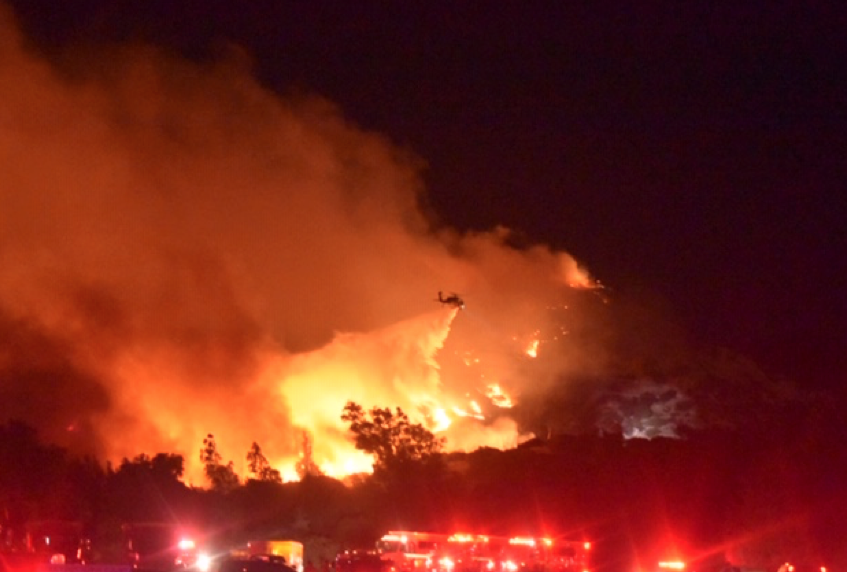CommentsLA WATCHDOG--The State has mandated that Department of Water and Power transition to Clean Energy by 2045. At the same time, there will be increased demands on the Power System because of the transition to electric vehicles and the electrification of the building sector, all part of the effort to reduce greenhouse gas emissions. (Photo above: Saddle Ridge fire.)
As part of this transition to renewable energy sources, Mayor Eric Garcetti decreed in February that the Department would not repower its three gas fired coastal generating stations (Scattergood, Haynes, and Harbor). This implies that these facilities will be phased out by 2029, the deadline imposed by the State’s regulations for these ocean cooled facilities. However, there are no firm plans on how to replace this in-basin capacity that is essential to the flexibility, resiliency, and reliability of the Power System.
The importance of these gas fired facilities was demonstrated in October during the Saddle Ridge Fire in Sylmar when two-thirds of the transmission lines supplying out of basin power to the City were out of commission. Without these coastal facilities that can operate when the sun is not shining, it would have been lights out.
The Department is also being pressured not to construct a new 840 MW gas fired generating facility in Utah (Intermountain Power Plant) that would operational in 2025. This plant is scheduled to replace a 2,000 MW coal fired facility that will be decommissioned in 2025.
Again, there is no plan to replace this base load, gas fired facility that provides power 24 hours a day.
On Thursday, the National Renewable Energy Group, a world class Colorado based think tank retained by DWP, made a presentation to the DWP’s 100% Renewable Advisory Group that discussed the many variables that influence the march to 100% Renewables by 2045. These included, among others, the impact of climate change and higher temperatures, increased power requirements for the transportation and building sectors, energy storage systems (pumped hydro, batteries, and compressed air), demand response and energy efficiency, the need for transmission lines into the City, the rejiggering of the City’s distribution system, and reliability.
In 2020, NREL will present models that outline the costs associated with various configurations of the Power System. This data will be used by the Department to develop rate structures that detail the financial impact on Ratepayers.
And no doubt, it will not be pretty given the need to finance over $70 billion in capital expenditures primarily through rates as opposed to debt given the already high debt levels of the Power System.
One alternative that is not being considered is the 90% Renewables alternative, where the reduction in greenhouse gases is measured over a wider base that includes the transportation and building sectors that benefit from increased electrification. This will result in a lower cost of power because it will eliminate the extraordinarily high cost of the last 10% (the “last mile”).
However, Mayor Garcetti and the Herb Wesson led City Council do not appear to be concerned about the reliability of the Power System and the impact on Ratepayers. But then again, Garcetti and Wesson are not known for their financial acumen as demonstrated by the recent budget fiasco that resulted in $1.4 billion river of red ink over the next five years.
Once again, they have sold us out to special interests, in this case, the environmental lobby that could care less about Reliability and Ratepayers.
*************
On Tuesday, the DWP Board of Commissioners will authorize the transfer of $229.9 million to the City, a tax that has not been approved by the voters. Over the last ten years, Ratepayers have forked over $2.5 billion to the City, money that the Department could have used to maintain the Power System’s infrastructure and improve the reliability of the grid. On the other hand, the transfer payment has decreased 14%, from a high of $267 million in 2016 because of the settlement of a class action lawsuit.
((Jack Humphreville writes LA Watchdog for CityWatch. He is the President of the DWP Advocacy Committee and is the Budget and DWP representative for the Greater Wilshire Neighborhood Council. He is a Neighborhood Council Budget Advocate. He can be reached at: [email protected].)
-cw
















